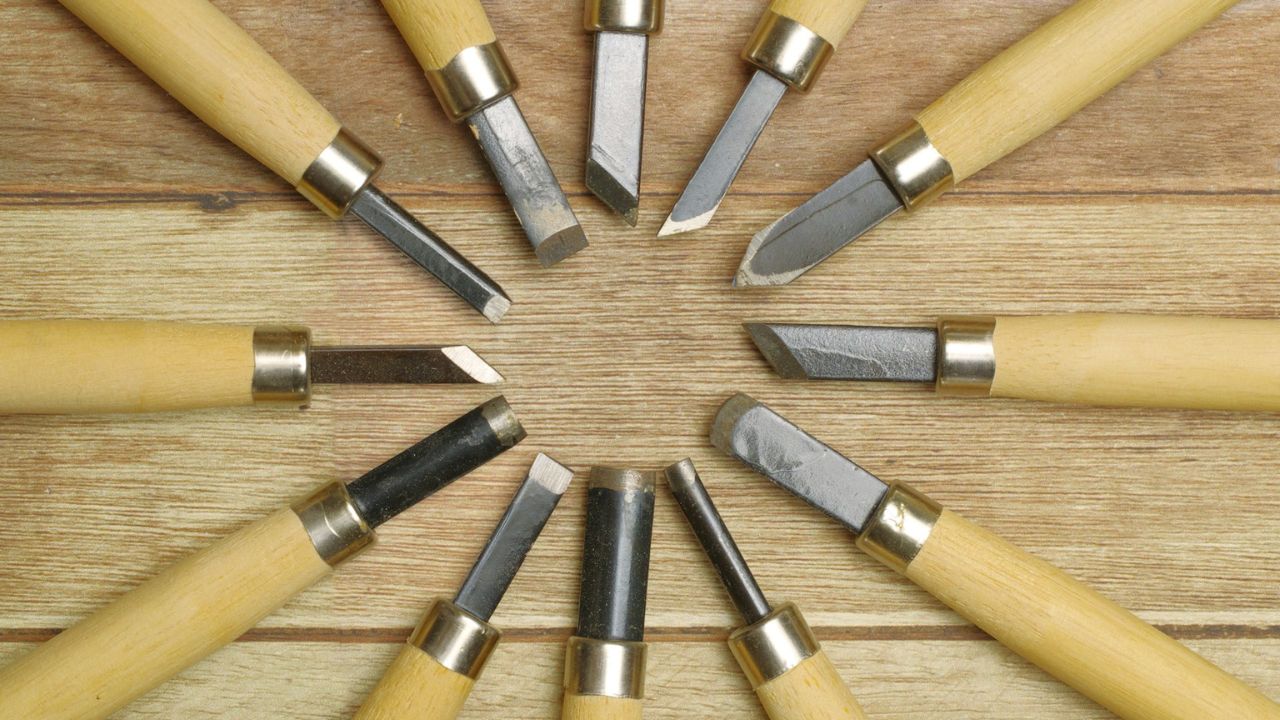Woodworking Hand Tools: The Complete Guide to Get a Beginner or Enthusiast Going
Woodworking is an art that has been passed from generation to generation. Be one an accomplished woodworker or a fresher; the right kind of hand tool makes all the difference in bringing into being a unique functional piece. In this paper, we are going to look at what each of the common woodworking hand tools does and why it is indispensable in any project relating to this particular field. We are also going to share with you some of the most amazing hand tools that you can find at this link, and which will definitely raise your woodworking game.
Take Your Woodworking to the Next Level! Build 16,000 Woodworking Projects With Step-By-Step Plans
Why Woodworking Hand Tools Matter?
To some, it may seem as though hand tools have little place in today’s world of power tools and automated machinery. They are still indispensable in the realm of woodworking for a couple of reasons:
- Precision and Control: Hand tools allow detailed work, especially on intricate details or fine finishes.
- Portability: Unlike bulky power tools, hand tools are easy to carry and use anywhere.
- Quiet Operation: This will be very helpful for those working with hand tools because many workers like quiet during work hours.
- Skill Building: Working with hand tools would also allow an individual to enhance the overall feel in technique and material concerning wood.
If you are a beginner and want to have a really solid foundation in woodworking, quality hand tools are an investment that you will need to make. Check out this set of tools that has been compiled to help get you up and running
Basic Hand Tools for Woodworking

Now, a close look at the general hand tools, which any woodworker would be glad to have possessed, are, in fact, convenient and reliable and can be used in a number of tasks.
1. Hand Saws
The handsaw is the most basic but key tool required in woodworking; it is good to cut a board to size for precision cutting joints such as dovetail and tenons. Hand saws are of the following type, namely:
- Cross cut saws which cut across the grain,
- Rip saws are for cutting along the grain,
- Back Saws, mainly used for precision works such as tenons and dovetail.
2. Chisels
Chisels carve, shape, and clean up joints. There are a lot of sizes and shapes for chisels, and each does its specific job best. A good-quality sharp chisel does make the difference in your projects.
3. Planes
Hand planes are designed to smooth and flatten wood surfaces. They are a necessity to be worked with prior to finishing wood. Common types include:
- Bench Planes: These will be used for general smoothing and flattening.
- Block Planes: These are best for smaller, finer work.
- Shoulders Plane: For the trimming of tenons among others in joinery.
4. Measuring and Marking Tools
Measurement tools are what help in making accurate cuts and joints. Some indispensable ones include:
- Tape Measures: These measure.
- Squares: Mark right angles.
- Marking Gauges: To put on score lines parallel to the edges of the woods.
5. Hammers and Mallets
A good hammer is required for whacking nails, but a wooden or rubber mallet is ideal in taping the joints together without denting the wood.
6. Screwdrivers
Screwdrivers: These are needed in the assembly of projects and for making adjustments to the tools. Find both flathead and Phillips head.
7. Clamps
Clamps: These hold pieces of woods together in drying glue or when a workpiece needed to be held in place. The sizes and types include bar clamps, C-clamps, and spring clamps.
8. Files and Rasps
These tools are used for the shaping and sanding of the wood. Much helpful in doing fine tuning on curves and edges.
9. Sharpening Tools
Sharp tools are safe and efficient tools. Sharpening stones, honing guides, and strops maintain your chisels, planes, and saws sharp.
If you’re ready to begin building this basic tool kit, there are some fantastic options available here.
Choosing the Right Hand Tools
The quality of the tool should be considered first in choosing the most effective hand tools. To ensure that appropriate tools are selected, the following shall be essential to look at:
- Material: Materials used should be strong and of high quality, for example, blades made from high-carbon steel and handles from hard woods.
- Comfort: Ergonomics count. Move for the tools which will have comfortable grips to reduce hand fatigue.
- Brand Reputation: Consider buying from well-established brands noted for their craftsmanship and durability.
- Versatility: Choose only those tools that can multitask for maximum value.
For a solid and affordable set of woodworking hand tools click here.
Caring for Your Hand Tools

Proper care will extend the life of your tools and keep them working well. Here are a few care suggestions:
- Keep Them Clean: Wipe down your tools after use, removing dust and other debris.
- Sharpen Regularly: A dull tool is a poor performing/unsafe tool. Allow sharpening to be a regular activity in your practice.
- Store Properly: Tools should be kept on tool rolls, on the racks, or in cabinets for their safety in order to keep them free from damage and rust.
- Oil Moving Parts: Lightly coat hinges and other moving parts with a light application of oil for anti-rust purposes and also for smooth movements.
Projects to Try with Hand Tools
Having an idea of what the basic tools are, the following are some projects which a novice can easily attempt:
- Cutting Board: Very simple, practical project that will help you get comfortable with measurement, cutting and sanding.
- Wooden Shelf: Good to practice joinery.
- Picture Frame: Great to practice precision cut and assembly.
- Toolbox: Make a nice toolbox for your growing collection of hand tools.
As you complete these projects, you will gain confidence and come to appreciate the reward found in the pleasure of using hand tools. If you need to build up your set of tools, don’t forget to take a look for an excellent selection.
Timeless Appeal of Hand Tools
Of course, there is a place for power tools, but there’s just something intrinsically satisfying about working with hand tools. They connect you with the material and process in a way that machines just can’t. Plus, it allows you to set the pace, nurturing creativity and mindfulness.
If you are ready to take up the art of woodworking, then get the right tools to start off. Find everything you need
Conclusion
Hand tools in woodworking are so much more than instruments; they extend your imagination and skill. Be it furniture building, crafting small items, or simply the enjoyment of the process, it’s the right tools that make all the difference. The right hand tools and time to learn how to use them will have no limit of rewards with this craft.
So, what’s holding you back? Get ready to enter the world of woodworking hand tools and create something amazing today. Check out this fantastic collection for the perfect toolset to begin your next project.
Take Your Woodworking to the Next Level! Build 16,000 Woodworking Projects With Step-By-Step Plans
Can You Make Money Selling Woodworking Projects?
What Woodworking Project is Most Profitable?
How to Make Money Fast with Woodworking?
What is the Highest Paid Woodworker?
Is Woodworking a Good Business to Start
What is the Best Platform to Sell Woodworking Projects?
How to Sell Wooden Items Online?
Woodworking Related Topics And Tags: adult woodworking, woodworking projects, beginner woodworking, creative woodworking, woodworking skills, DIY woodworking, woodworking guide, advanced woodworking, DIY projects, woodworking for adults, furniture making, woodworking benefits, adult hobbies, stress relief, skill-building, woodworking community, woodworking business, handmade furniture, selling woodworking, DIY business, woodworking tips, custom woodworking
